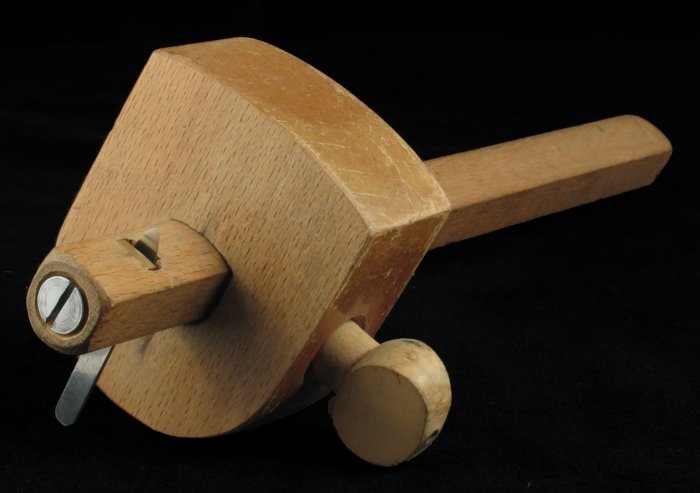Jacob
What goes around comes around.
Not sure whether to be flattered or insulted!bridger":22plmhwt said:I guess the game of Jacob-baiting is sort of an official game here at UKW... and played by none quite so well as Jacob himself.

Not sure whether to be flattered or insulted!bridger":22plmhwt said:I guess the game of Jacob-baiting is sort of an official game here at UKW... and played by none quite so well as Jacob himself.
bridger":37tizn9t said:I guess the game of Jacob-baiting is sort of an official game here at UKW... and played by none quite so well as Jacob himself.
David C":zl03kccn said:Since the demise of the 5061, wobble in the second dimension, can be eliminated by planing the stick face, opposite the screw, out of square. The screw then twists the stick in the hole to make it firm.
I learned this very useful technique from Colen Clenton. My gauge pins are ground and honed to small crescent shaped knives. Just like his pins. These work very well both long and cross grain. Cutting gauges are reserved for veneer work.
David Charlesworth.







Julian":3nw3yc2q said:What I like about the humble marking gauge is its humble simplicity and the way that it works because it is simply bound to.
A sharp point on a stick and a fixed distance. What could be easier or more elegant?
=D> =D> =D>Ed Bray":2rep18je said:Just to bring this subject back on topic, how would you go about sharpening the core tool set?
Well yes.Julian":1wlspeps said:What I like about the humble marking gauge is its humble simplicity and the way that it works because it is simply bound to.
A sharp point on a stick and a fixed distance. What could be easier or more elegant?
Jacob":dokhd19n said:Mind you I have a beautiful cast iron bottle opener on my key ring - this sort of thing.
It's not affected by seasonal movement in the slightest!
woodbrains":3c3fjlbk said:Jacob":3c3fjlbk said:Mind you I have a beautiful cast iron bottle opener on my key ring - this sort of thing.
It's not affected by seasonal movement in the slightest!
Hello,
At last, a definite contender for inclusion in anyone's core tool kit!
Mike.
Julian":1oa7ipte said:What I like about the humble marking gauge is its humble simplicity and the way that it works because it is simply bound to.
A sharp point on a stick and a fixed distance. What could be easier or more elegant?
Tapered pin keeps things simple.David C":fiw4xeva said:The modifications I have described will produce a gauge that works as well or better than a Titemark.
These take some care and time.
The pin is visible and cuts deeper than any disk/wheel. One side of the line is square to the surface, which greatly assists accuracy, just like a knife line.
Starting and stopping are more precise.
All this on a wooden gauge costing less than £5.
I can see no possible advantage in a tapered pin, except possibly for carpentry?
David
David